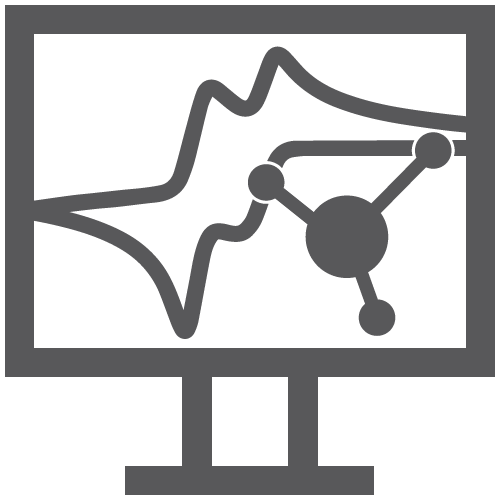
Electrochemical Simulation
Back to Electrochemical Simulation Back to Applications Back to Knowledgebase HomeAbout AfterMath Live – Electrochemical Simulation
Last Updated: 10/23/23 by Tim Paschkewitz
Download as PDF1Introduction
AfterMath Live Electrochemical Simulation
 AfterMath Live Electrochemical Simulation
is an exciting and highly requested feature. Our goal is to provide an integrated solution into our already powerful AfterMath Electrochemical Studio software application. There are inherent benefits in only having to use one single application to acquire experimental data, fit those data, analyze, and plot, and now simulate. By integrating these components into a single application, it saves time and hassle as users do not have to import/export across more than one application.
AfterMath Live Electrochemical Simulation
is an exciting and highly requested feature. Our goal is to provide an integrated solution into our already powerful AfterMath Electrochemical Studio software application. There are inherent benefits in only having to use one single application to acquire experimental data, fit those data, analyze, and plot, and now simulate. By integrating these components into a single application, it saves time and hassle as users do not have to import/export across more than one application.
Other electrochemical simulation software exists at various price points and capabilities. Some of these options might be free but lack in features or flexibility and have little to no support. Others might be full featured, yet costly, and are not well-developed or user-friendly for a broad audience, like newcomers to electrochemistry. A team of Pine Research electrochemical scientists and software engineers actively support AfterMath Live. Best of all, AfterMath Live is available online, streaming, in your browser and can be used with any operating system including Windows, Apple OS, Linux, and Chromebooks!
2Simulation Engine Development
The electrochemical simulation engine in AfterMath Live employs fast quasi-explicit finite difference (FQEFD) for semi-infinite linear diffusion utilizing an exponentially expanding space grid (based on the DuFort-Frankel algorithm).
 Feldberg, Stephen W. A fast quasi-explicit finite difference method for simulating electrochemical phenomena: Part I. Application to cyclic voltammetric problems. J. Electroanal. Chem. Interfacial Electrochem., 1990, 290(1), 49-65.
Feldberg, Stephen W. A fast quasi-explicit finite difference method for simulating electrochemical phenomena: Part I. Application to cyclic voltammetric problems. J. Electroanal. Chem. Interfacial Electrochem., 1990, 290(1), 49-65.
Rudolph, M. A fast implicit finite difference algorithm for the digital simulation of electrochemical processes. J. Electroanal. Chem. Interfacial Electrochem., 1991, 314(1), 13-22.
Feldberg, Stephen W. Optimization of explicit finite-difference simulation of electrochemical phenomena utilizing an exponentially expanded space grid: Refinement of the Joslin-Pletcher algorithm. J. Electroanal. Chem. Interfacial Electrochem., 1981, 127(1), 1-10. This method has been found to give highly accurate results as compared to theory. It is particularly effective for dealing with mathematically stiff problems, which involve large values of one or more homogenous rate constants and/or a wide dynamic range of homogenous rate constants. The FQEFD method enhances the computational speed by several orders of magnitude as compared to the traditional fast implicit finite difference (FIFD) method.
Rudolph, M. A fast implicit finite difference algorithm for the digital simulation of electrochemical processes. J. Electroanal. Chem. Interfacial Electrochem., 1991, 314(1), 13-22.
Feldberg, Stephen W. Optimization of explicit finite-difference simulation of electrochemical phenomena utilizing an exponentially expanded space grid: Refinement of the Joslin-Pletcher algorithm. J. Electroanal. Chem. Interfacial Electrochem., 1981, 127(1), 1-10. This method has been found to give highly accurate results as compared to theory. It is particularly effective for dealing with mathematically stiff problems, which involve large values of one or more homogenous rate constants and/or a wide dynamic range of homogenous rate constants. The FQEFD method enhances the computational speed by several orders of magnitude as compared to the traditional fast implicit finite difference (FIFD) method.
3Simulation Confidence
In using any new software, users might be skeptical or uncertain about what the software reports. We have found it very helpful to compare the output from our simulation software to the classic examples found in the 3rd Edition of Electrochemical Methods by Bard, Faulkner, and White.
 Bard, A. J. ; Faulkner, L. R. ; White, H. S. Electrochemical Methods Fundamentals and Applications, 3rd ed. John Wiley & Sons, Inc.: New York, 2022.
We simulated the many examples from Electrochemical Methods in AfterMath Electrochemical Studio.
Bard, A. J. ; Faulkner, L. R. ; White, H. S. Electrochemical Methods Fundamentals and Applications, 3rd ed. John Wiley & Sons, Inc.: New York, 2022.
We simulated the many examples from Electrochemical Methods in AfterMath Electrochemical Studio.
 AfterMath Live – Electrochemical Simulation – Verification
The plots were customized (colors, weights, fonts, etc.) in AfterMath to resemble the examples in the text. In all cases, the output from our simulations exactly matches the cases provided in the text.
AfterMath Live – Electrochemical Simulation – Verification
The plots were customized (colors, weights, fonts, etc.) in AfterMath to resemble the examples in the text. In all cases, the output from our simulations exactly matches the cases provided in the text.
AfterMath Live website features the Sim Library, which is a contributed open access library of simulation and experimental data, including the textbook references above!



